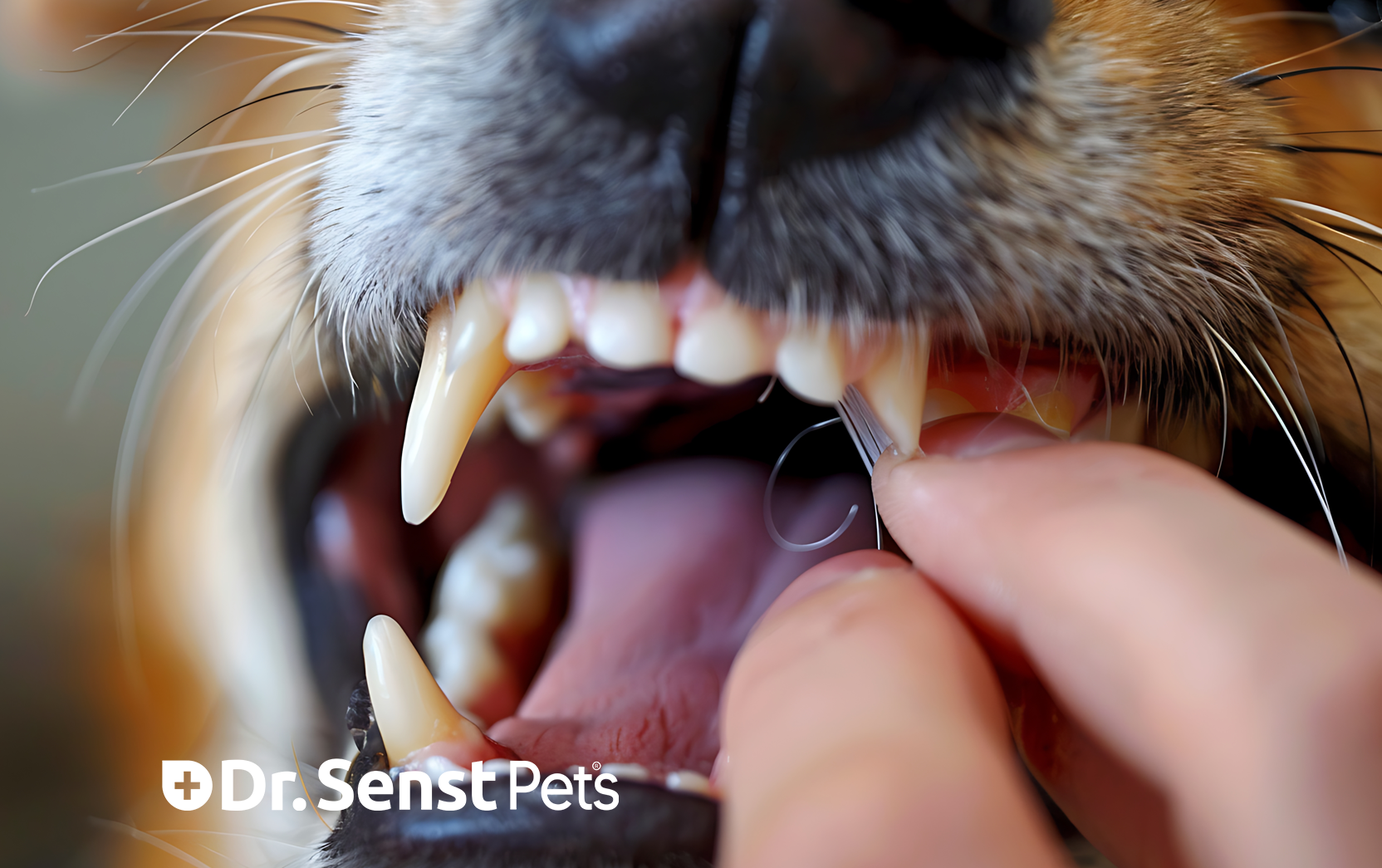
- by Dr.Thilo Senst
How to Clean Your Dog’s Teeth at Home: Step-by-Step Guide for Healthy Gums
- by Dr.Thilo Senst
How to Clean a Dog’s Teeth at Home: Step-by-Step Guide
Maintaining your dog's dental health is crucial for their overall well-being. Brushing their teeth regularly helps prevent plaque buildup, gum disease, and even more severe issues like tooth loss and organ infections. In this comprehensive guide, we will walk you through the process of cleaning your dog's teeth at home, the importance of dental care, and the products that can help maintain a healthy smile for your furry friend.
Much like humans, dogs require regular dental care to avoid problems such as plaque buildup, tartar, bad breath, and gum disease. Left untreated, these issues can lead to painful infections and tooth loss, affecting your dog’s ability to eat comfortably. More seriously, poor oral hygiene in dogs has been linked to conditions like heart disease and kidney failure.
According to PDSA UK, dental disease affects around 80% of dogs by the age of three. Regular cleaning at home is the most effective way to prevent these issues from occurring.
Here’s a step-by-step guide to help you clean your dog's teeth at home.
Before starting, ensure you have the correct tools for cleaning your dog’s teeth. You will need:
Begin by helping your dog get used to the process. You can do this by gently rubbing their gums with your finger before introducing a toothbrush. This step helps reduce anxiety and makes brushing a more positive experience for your pet.
Apply a small amount of dog toothpaste to the brush. Hold your dog’s mouth open and brush their teeth in small, circular motions. Focus on the outer surfaces, as most plaque builds up here. Don’t forget to brush the gum line gently.
Keep the brushing session short and gentle, aiming for around 30 seconds per side of the mouth. Praise your dog during the process and offer a treat at the end to create a positive association with toothbrushing.
For best results, aim to brush your dog’s teeth at least three times a week. However, daily brushing is ideal if your dog is comfortable with it.
Here are a few additional tips to make the toothbrushing process more manageable:
Start Young: Begin cleaning your dog’s teeth as early as possible. Puppies are more likely to accept brushing as part of their routine.
Consistency is Key: Create a regular brushing schedule. Brushing your dog’s teeth at the same time every day will help them get used to the process.
Make It Enjoyable: Use a flavoured toothpaste that your dog loves, and offer them rewards, making the process enjoyable rather than stressful.
Use Dental Chews: Supplement brushing with dental chews like Dr. Senst Plaque Off Dental Powder, which can help reduce plaque buildup and freshen breath.
There are numerous benefits to maintaining a dog’s dental hygiene. These include:
Think of your dog’s teeth like a car. If you neglect regular maintenance, problems will begin to accumulate, eventually leading to a breakdown. Just as a car needs oil changes and servicing to run smoothly, your dog’s teeth need routine cleaning to avoid costly and painful dental problems.
Several common dental problems can affect dogs if their teeth are not cleaned regularly:
Q: How often should I clean my dog’s teeth?
A: Ideally, you should clean your dog’s teeth daily. However, brushing 3-4 times a week is still beneficial.
Q: Can I use human toothpaste to clean my dog’s teeth?
A: No, human toothpaste contains ingredients like fluoride, which are toxic to dogs. Always use toothpaste specifically designed for dogs.
Q: My dog hates brushing. What should I do?
A: Start slow by letting your dog get used to the brush and toothpaste. You can also use dental chews or water additives as alternatives while you gradually introduce brushing.
Q: Are dental treats a good alternative to brushing?
A: While dental treats like Dr. Senst Plaque Off Dental Powder are helpful, they should complement regular brushing rather than replace it.
To support your efforts in maintaining your dog’s dental health, I recommend incorporating some additional dental care products from the Dr. Senst range:
Dr. Senst Plaque Off Dental Powder: This product helps reduce plaque and tartar buildup while freshening your dog’s breath. It’s easy to sprinkle on your dog’s food daily, offering a convenient solution for those dogs that are resistant to brushing.
Dr. Senst Dog Calming Treats: While not directly related to dental care, these calming treats can make brushing easier for anxious dogs. A calm dog will be more cooperative during brushing sessions.
Dr. Senst Probiotics for Dogs Treats: A healthy gut supports overall well-being, including oral health. These probiotics can help balance your dog’s system and reduce inflammation that may be contributing to dental issues.
By incorporating these products into your dog’s routine, you can help maintain a healthy mouth and prevent long-term dental problems.
![]()
Enter your details & download our comprehensive 50+ page printable Dr. Senst Pet Care Planner completley FREE! - keep track of all your pet’s needs, from medical history and training to vet visits, grooming, diet, and more!










Share:
How Diet Can Help Manage Dog Skin Allergies: Essential Tips
Understanding Cat Flea Allergies: Symptoms and Effective Treatments